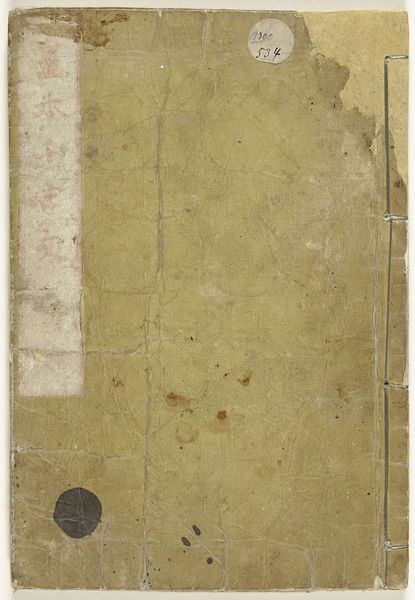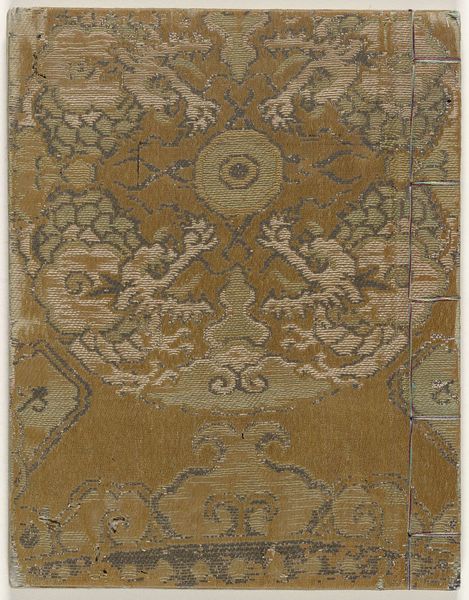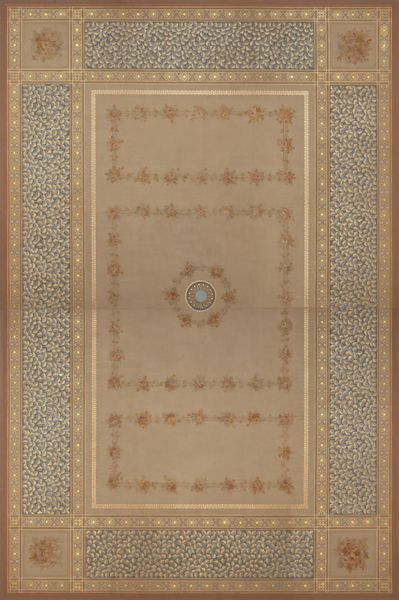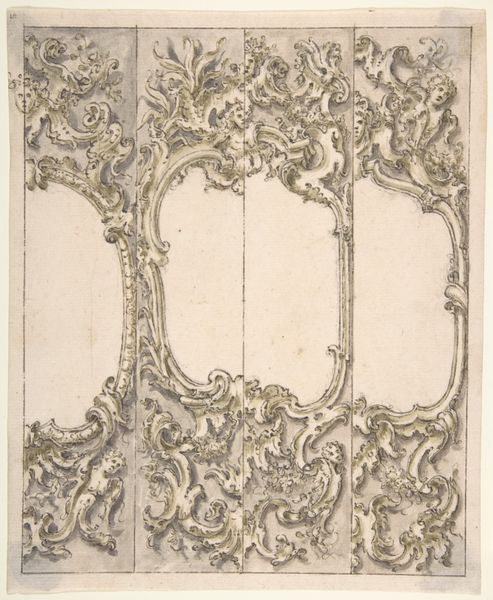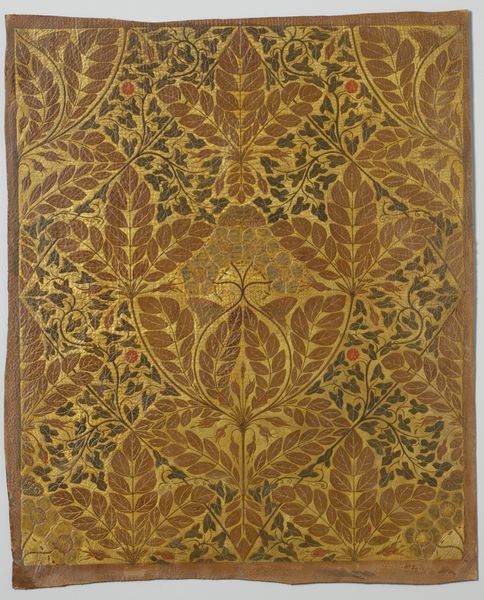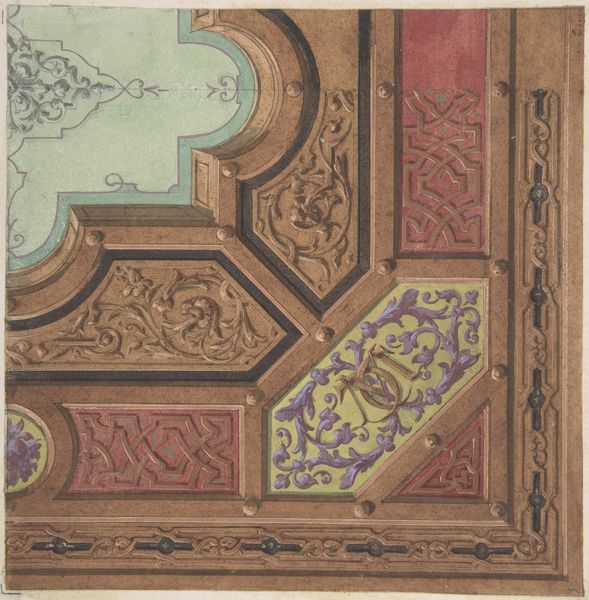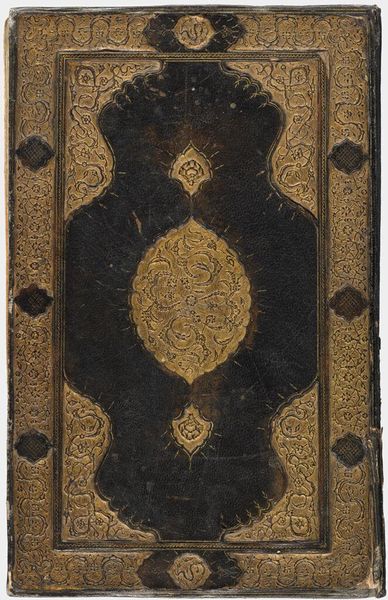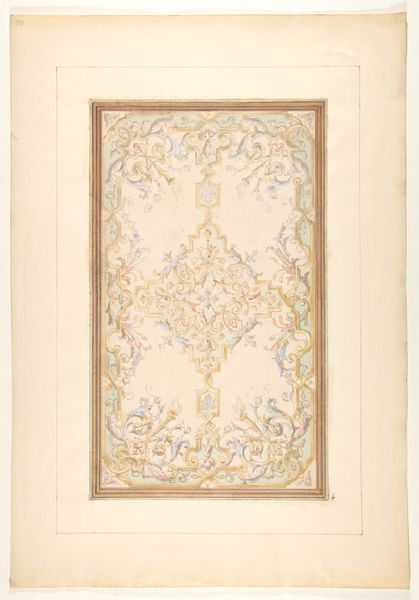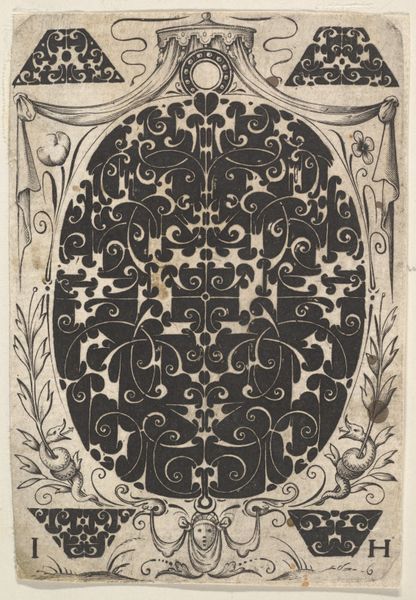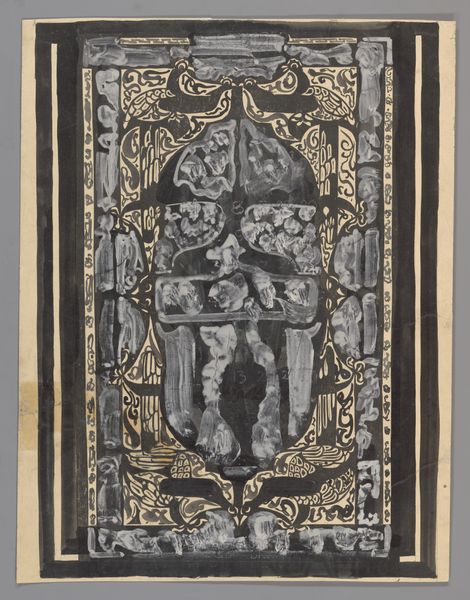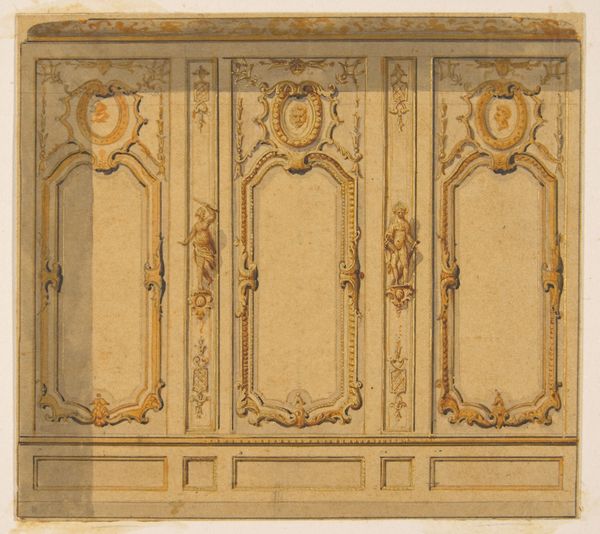
drawing, mixed-media, paper, ink
#
drawing
#
mixed-media
#
art-nouveau
#
paper
#
form
#
ink
#
organic pattern
#
geometric
#
line
#
symbolism
Dimensions: height 288 mm, width 215 mm
Copyright: Rijks Museum: Open Domain
Editor: So, this is Carel Adolph Lion Cachet's "Ontwerp voor boekband voor Oranje gedenkboek," dating somewhere between 1874 and 1945. It’s a mixed-media drawing with ink on paper. What I immediately notice is its intricate, almost geometric pattern. It feels very much like a stylized, illuminated manuscript. How do you interpret this work within its historical context? Curator: Well, consider this as a design for a commemorative book for the House of Orange. That immediately throws us into the socio-political landscape of the Netherlands at that time. The House of Orange played a crucial role in Dutch identity. How do you think a design like this, with its symbolic elements and ornamental style, would contribute to solidifying national identity? Editor: I guess it would depend on how widely circulated the book was. If this design was mass-produced, its symbols could have a powerful effect, embedding the monarchy and national pride in people's everyday lives. But the gridlines visible here, almost like graph paper, suggest this is a design, a proposal. Does the Art Nouveau style have any historical connections with such nationalistic endeavours? Curator: Precisely. Art Nouveau was often employed by different nations for varied nationalistic aspirations; sometimes embracing unique regional symbols and art styles to show heritage; and sometimes more broadly used to symbolize modernity and advancement under their nation's banner. It played an important role in shaping a nation’s image, influencing social perception of what defines Dutch cultural identity. Have you noticed any particular elements that hint at nationalistic ideas? Editor: Hmm...I see inscriptions which might signify historical connections. The design reminds me of illuminated manuscripts; its presence could strengthen Dutch society by visually representing their long historical lineage of the House of Orange. What do you think? Curator: Yes, excellent. By creating visually potent symbolism through design, art is made to take on a significant part in reinforcing national sentiments during such period. The Art Nouveau elements help create an ideal public persona. Editor: I never considered a book cover having so much historical weight. It really emphasizes the important relationship between design, national image-building, and even public sentiments. Curator: Indeed. Even a design like this can serve as a reminder that imagery always plays a part in politics and national identity.
Comments
No comments
Be the first to comment and join the conversation on the ultimate creative platform.
